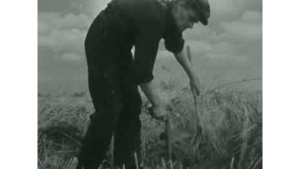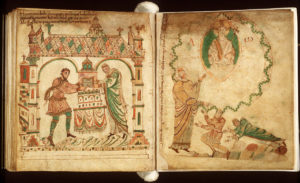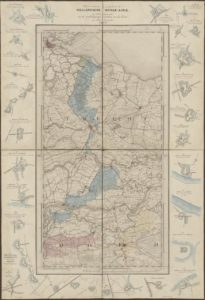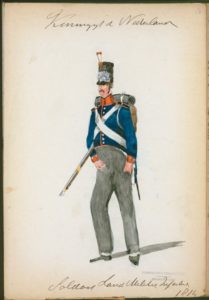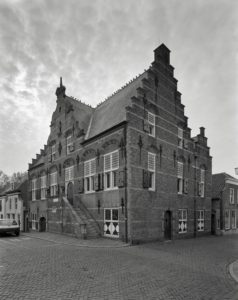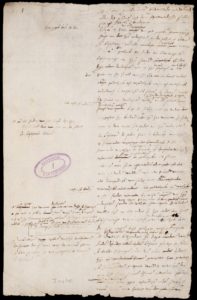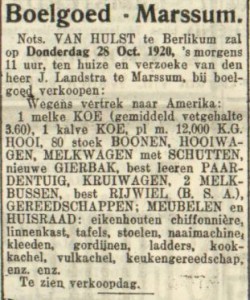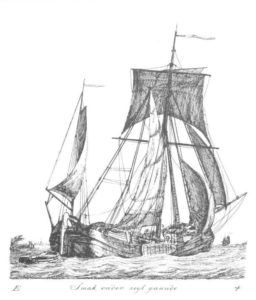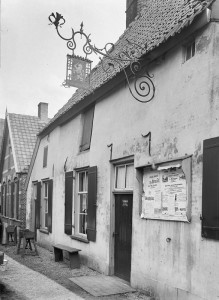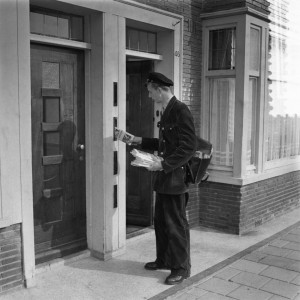Oogst is the Dutch word for harvest. During harvest time, most schools in the countryside would be nearly empty because children were kept home from school to help with the harvest. This silent movie from 1939 shows you how traditional harvesting was done. Credits: Harvest time, by Polygoon-Profilti (producer) / Netherlands Institute for Sound and Vision (curator) (public domain) … [Read more...]
Dutch term – Abdij
An abdij is an abbey. Especially during medieval times, abbeys were important land owners. Many of them owned large estates, farmed by tenants or serfs. In addition, they were often entitled to tithes of several properties, usually a percentage of the proceeds. The archives of these abbeys can sometimes give information about the earliest known history of the towns where they owned property, or about the tenants and serfs who worked for them. Famous abbeys in the Netherlands were located … [Read more...]
Dutch term – Hollandse Waterlinie
De Hollandse Waterlinie (Holland Water Defense) was a uniquely Dutch defense system that combined large-scale inundations with strategically placed forts. In times of war, large sections would be inundated to prevent an approaching army from reaching the rich cities of the province of Holland. Some smaller scale inundations had been used in the Eighty Years War (1568-1648) but in 1672, when the Netherlands was at war on three fronts, the larger scale defense line that became known as the … [Read more...]
Dutch term – Soldaat
A soldaat is a soldier, the lowest rank in the army. Before the French occupation, the Netherlands only had a professional army. Soldiers were recruited from all over Europe, bringing many Scots, Swiss and other soldiers to the country. Conscription for men between the ages of 20 and 45 was introduced in 1810. It was suspended in 1997, though never officially abolished. … [Read more...]
Dutch term – Gemeentehuis
The Gemeentehuis (house of the municipality) or raadhuis (house of the council) is the town hall. In civil registration records, you will often encounter the gemeentehuis as the place where births, marriages and deaths were recorded. Civil marriages often take place at town hall. It also houses the offices of the mayor, municipal council and municipal clerks. Gemeentehuizen were originally found in the center of the town. In the 1900s, when bureaucracy increased, many places had larger town … [Read more...]
Dutch term – Plakkaat van Verlatinghe
The Plakkaat van Verlatinghe was the act whereby the Estates General of the Netherlands abjured their overlord, King Philip II of Spain, on 26 July 1581. This record is considered to be the birth record of the country of the Netherlands, similar to the Declaration of Independence in the United States. The original is in Spanish hands, as it was sent to the King. A draft version on display at the Nationaal Archief, the National Archives of the Netherlands and available online. … [Read more...]
Dutch term – Boelgoed
Boelgoed is an estate sale. The term is typical for the northern provinces of Friesland and Groningen. Estate sales were often organized by a notary who oversaw the public auction of movable goods. The sale was usually held at the house of the owner. You will typically find a boelgoed after somebody died, or before emigration. If the boelgoed was for the estate of a deceased, you will often find the heirs buying the majority of the items. Having a public sale was not just a way to … [Read more...]
Dutch term – Overboord
Overboord means "overboard," in the literal sense of going over the side of the ship. It is one of many Dutch nautical terms that made its way into English. In death records or newspaper articles, you may sometimes find that your ancestor was overboord geslagen [went overboard] and drowned. Example: Gerrit Engels Mooi Abstract: Harlingen, 22 August 1838 Recorded an extract of a death record created on board of the Dutch "smakschip" [light coastal ship] De Waakzaamheid [the … [Read more...]
Dutch term – Uithangbord
An uithangbord is a sign hanging from the façade of a building. Many businesses had one. It served as advertising and as a form of address: people often referred to a house by the sign that hung from it. In old court records, you can sometimes find references to these signs, for example in phases like ". . . sells his inn at the Achterstraat, where the Red Lion hangs from." The photo below shows an example of such a sign, hanging from an inn that dates to 1677. … [Read more...]
Dutch term – Postbode
A postbode is a mail man. For large parts of the 1800s and 1900s, the government controlled the delivery of the mail and mail men were civil servants. You can find their personnel and pension records at the Nationaal Archief in The Hague. … [Read more...]
